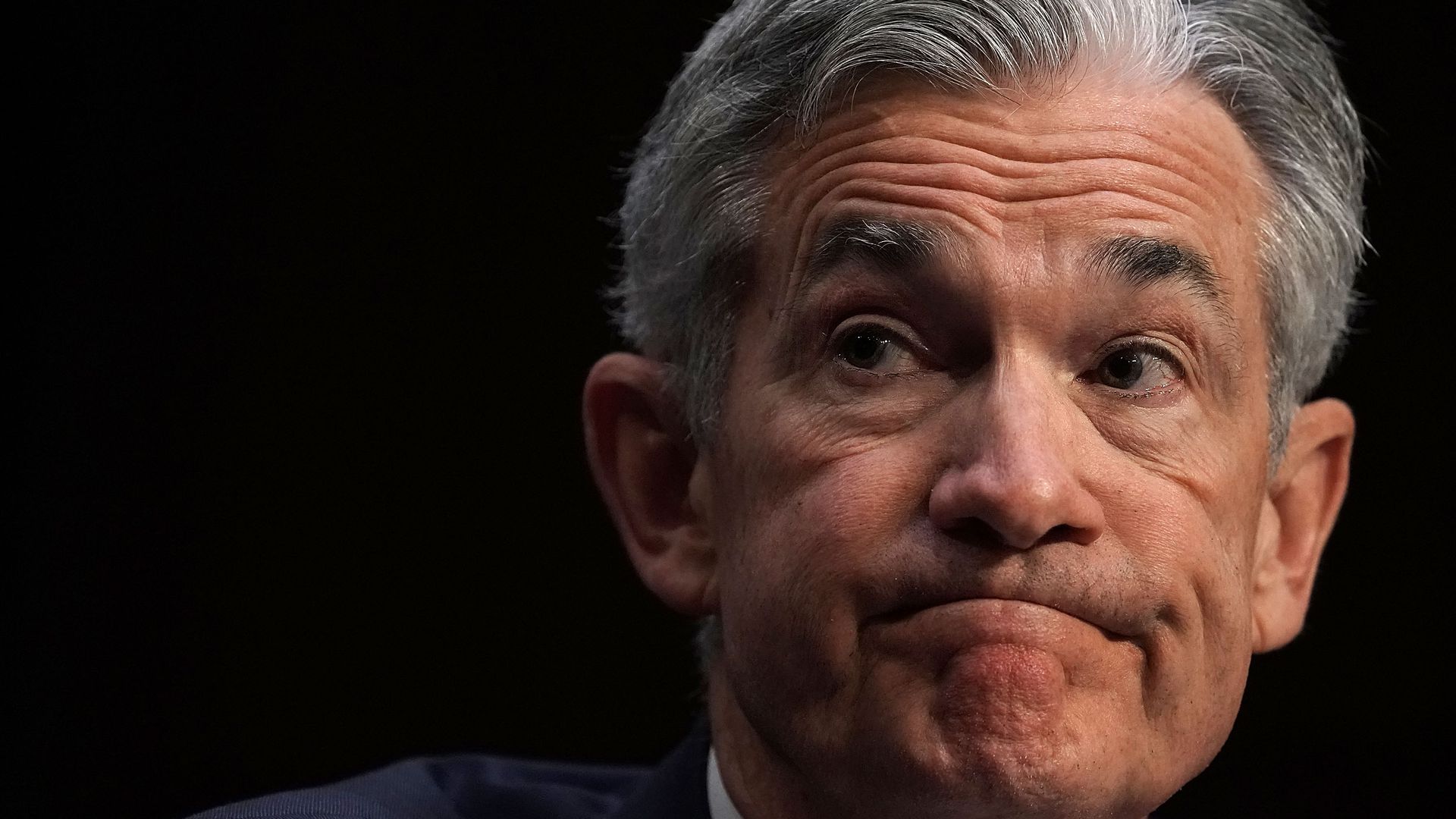Powell Catches His Breath As The “Worst Ever” Headlines Fade
“As always, there is no pre-set path for policy… And particularly with muted inflation readings that we’ve seen coming in, we will be patient as we watch to see how the economy evolves.”
– Jerome Powell, January 2019
Core Views
- Remain negatively positioned towards German and UK debt
- Strategic focus on curve trades in the US, where we favour 5-30s flattening after the recent steepening move, while maintaining a negative duration view
- Position for further credit spread widening (avoid holding beta)
- Favour short and intermediate maturities and avoid generic and lumpy issuers in the BBB space – we don’t expect the primary market to be well bid in early 2019
- Hold cash while awaiting attractive single-name opportunities in credit
Macro: The aforementioned, soothing words by Chair Powell in early January seemed enough to lift risk appetite and return some confidence that the Fed is indeed prepared to acknowledge the recent volatility in financial markets. The comments followed a stronger-than-anticipated labour market report, which indicated further progress for job growth and wage inflation in the US. This caused immediate recession fears to abate and US Treasuries gave up roughly half of their 30bp gains since the December FOMC rate hike (Chart 1, next page).
It indeed seems that the Fed—either by their own will or under political pressure—has been forced to recalibrate its communication strategy following their December FOMC statement and subsequent press conference, which seemed to have stoked an already deeply negative risk sentiment. What followed is well documented with December 2018 gaining many awards in the “worst ever” section in financial market history books – the likes of which teased out rousing commentary from US President Trump.
“The only problem our economy has is the Fed. They don’t have a feel for the Market, they don’t understand necessary Trade Wars or Strong Dollars or even Democrat Shutdowns over Borders. The Fed is like a powerful golfer who can’t score because he has no touch – he can’t putt!”
– President Trump, Christmas Eve 2018
 The general tone of most of the sell-side research and outlook authors is understandably very muted, given the volatility experienced in the previous quarter. Economic late cycle slowdown, quantitative tightening, political headwinds and trade wars seem to be leading the word counts and offer reasons why markets may continue to be volatile, likely leading to lower risk-adjusted returns from here onwards.
The general tone of most of the sell-side research and outlook authors is understandably very muted, given the volatility experienced in the previous quarter. Economic late cycle slowdown, quantitative tightening, political headwinds and trade wars seem to be leading the word counts and offer reasons why markets may continue to be volatile, likely leading to lower risk-adjusted returns from here onwards.
We agree that these are important factors to consider, but we also see most markets pricing in a relatively-negative scenario at this stage. A recovery in risk assets in the following weeks is therefore likely as risk appetite rebounds. Economic data—at least in the US—is robust enough to keep recession fears away in the medium term (Charts 3 and 4, below). The inevitable follow through of the negative market sentiment on economic data will be key in order to assess the resilience of the US economy to financial shocks.
 Overall, our macro views changed little from November to December. We view this as a transitional episode in what is a complicated divorce of financial markets’ reliance on extraordinary easy monetary policy. We expect further conventional rate hike normalisation while anticipating the Fed to initiate a pause by mid-2019 at 3%. The continued investment focus shifts firmly to those central banks where we expect a normalisation soon, especially the ECB.
Overall, our macro views changed little from November to December. We view this as a transitional episode in what is a complicated divorce of financial markets’ reliance on extraordinary easy monetary policy. We expect further conventional rate hike normalisation while anticipating the Fed to initiate a pause by mid-2019 at 3%. The continued investment focus shifts firmly to those central banks where we expect a normalisation soon, especially the ECB.
We therefore continue to be on balance negatively positioned towards German and UK debt, while we maintain our short in the US bond market. We continue to express a 5-30s flattening exposure in US Treasuries and prefer inflation-linked over nominal bonds. The recent communication turnaround by the Fed leads us also to be negative on the US dollar in favour of higher carrying EM currencies.
Credit: Elsewhere in fixed income there was little respite for the corporate bond market as spreads finished at the wides of the year. Interestingly, only the higher quality European investment grade universe was able to find support, with spreads drifting sideways for the month.
 Things were less positive in the US – late December gave up the biggest one day widening in US high yield since 2011 and led the universe over 75 bps wider in yield. This came in spite of the collapse in benchmark treasuries (US high yield spreads were up over 100 bps leaving total returns for the month at -2%). Such price action reinforces our focus on wider spreads in 2019; yields do not yet offer sufficient protection to safeguard investors from potential spread widening. US investment grade credit is starting to appeal at around 4.2% compared to their European counterparts at 1.3%, versus respective high yield universes at 8% and 5.3%.
Things were less positive in the US – late December gave up the biggest one day widening in US high yield since 2011 and led the universe over 75 bps wider in yield. This came in spite of the collapse in benchmark treasuries (US high yield spreads were up over 100 bps leaving total returns for the month at -2%). Such price action reinforces our focus on wider spreads in 2019; yields do not yet offer sufficient protection to safeguard investors from potential spread widening. US investment grade credit is starting to appeal at around 4.2% compared to their European counterparts at 1.3%, versus respective high yield universes at 8% and 5.3%.
The source for this near-term pessimism is the variety of scenarios under which we see spreads coming under pressure against a starting point for yields that is not yet able to weather capital losses. First and foremost, if the economy settles, then rate expectations could be revised upwards, which would likely see another challenge to relative valuations (yields) of credit and other “risky” asset classes vs. Treasuries.
In spite of a probable positive tone in such circumstances, we neither see investment grade nor high yield spreads finding a home near current valuations if the US treasury yield curve retries for a new cycle high. If the yield on “risk-free” assets rises to 3%+ then credit risk premia surely need to cheapen in order to retain investment support. Alternatively, if economic/trade/political fears are realised and government bond yields fall, we would expect spreads to widen given the pervading negative tone in such circumstances and the sensitivity of corporate fundamentals, mainly in the US, to any acceleration in a slowdown from here.
 It is also worth highlighting that quantitative tightening in 2019 will bring about a renewed focus on credit fundamentals, which overall look better in Europe than the US, with European corporates behind their US counterparts in bondholder unfriendly behaviour. This shows in the aggregate profiles of comparative universes, with key credit metrics such as interest coverage and leverage, although they are both travelling in the same direction.
It is also worth highlighting that quantitative tightening in 2019 will bring about a renewed focus on credit fundamentals, which overall look better in Europe than the US, with European corporates behind their US counterparts in bondholder unfriendly behaviour. This shows in the aggregate profiles of comparative universes, with key credit metrics such as interest coverage and leverage, although they are both travelling in the same direction.
Let us not forget that overall the corporate universe is of lower quality now than it was during the pre-financial crisis goldilocks period (the “all time tights”), as can be evidenced by index composition.
 Added to the mix and relevant in any context is the supply/demand picture for corporate bonds heading into 2019/20. The corporate bond market has significant refinancing needs, especially the BBB segment, as has been well documented, as well as outflows that can be considered in the context of a drop in central bank balance sheets. The central bank bid ultimately needs to be replaced and so far the evidence we have from late 2018 is that neither spreads nor yields are attractive enough for potential new allocators or peripheral investors in the corporate space.
Added to the mix and relevant in any context is the supply/demand picture for corporate bonds heading into 2019/20. The corporate bond market has significant refinancing needs, especially the BBB segment, as has been well documented, as well as outflows that can be considered in the context of a drop in central bank balance sheets. The central bank bid ultimately needs to be replaced and so far the evidence we have from late 2018 is that neither spreads nor yields are attractive enough for potential new allocators or peripheral investors in the corporate space.









